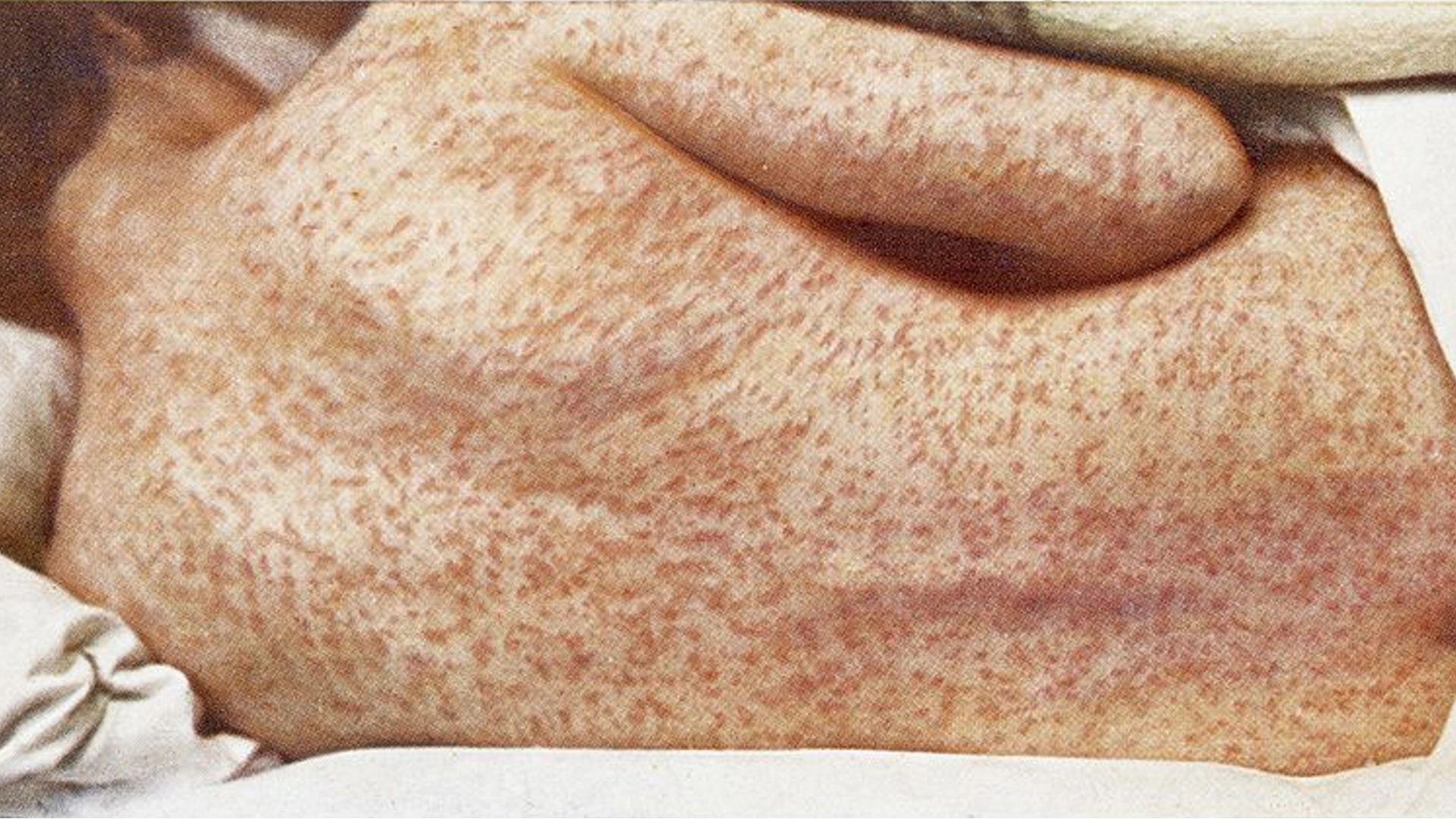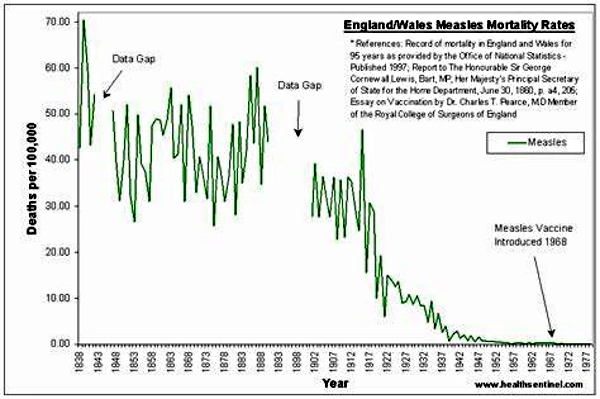
Sally Fallon Morell on Measles: A Natural Treatment and the Role of Vitamin A
Measles
by Sally Fallon Morell, Nourishing Traditions, Weston A. Price Foundation
January 11, 2022
With the Covid vaccination program now in shambles, officials are focusing their fear porn on the measles, as evidenced by a December 27, 2022 front page article appearing in the Washington Post.
“Diseases resurging as parents resist shots: Outbreaks of measles, chickenpox tied to rise in anti-vaccine sentiment,” places the blame on “parent resistance of routine childhood immunizations. . . intensifying a resurgence of vaccine-preventable diseases.” The article does not provide any information on exactly how many of the children who contracted measles were not vaccinated and how many were, but consists mostly of quotes from hand-wringing public officials about children not getting their shots.
A CBS news report tells a rather different story. In an Ohio outbreak involving eighty-two children, 94 percent of whom were under age five, “all of the children impacted by the outbreak are at least partially unvaccinated, meaning they have only received one dose of the necessary two for the measles-mumps-rubella vaccine, known as MMR, although four children still have an unknown vaccination status. Children are recommended to get their first dose between 12 and 15 months of age and the second between the age of 4 and 6.”
Since most of the Ohio children afflicted were under five, this means that all of them were in fact “fully vaccinated” since the second dose is recommended for children ages four to six. Vaccinated children who get the measles provide proof that measles is not “vaccine-preventable” at all. In fact, we are justified in asking whether children getting the measles so young—normally the illness occurs in children around age seven or eight—is an indication that the vaccine may be causing children to contract the measles too early in life.
The cause of measles, according to public health agencies, is a “highly contagious virus” spread through the coughings and sneezings of the afflicted—or even viruses remaining on surfaces that measles sufferers have touched. The problem is that scientists have been unable to find said virus in these fluids. Credit for the “isolation” or “discovery” of the “agent of measles” goes to John F. Enders, winner of the 1954 Nobel Prize in physiology and medicine.
Enders developed techniques of “propagating” the virus in a culture. The procedure involved taking throat cultures from children sick with measles, mixing them with “sterile fat-free milk,” adding a high dose of penicillin or streptomycin and then centrifuging this goop. The resulting supernatant fluid or sediments were again mixed with milk and used as inocula in different experiments, where they were added to various types of tissue including human kidney, human embryonic lung, human embryonic intestine, human uterus, rhesus monkey testes, human embryonic skin and muscle, human foreskin (!), rhesus monkey kidney and embryonic chick tissue. You can’t accuse Dr. Enders of not being thorough! Only the rhesus kidney cells gave Enders the results he wanted—a breakdown of the cells in the tissues. And yet, the consensus is that animals don’t get measles!
The culture medium consisted of bovine amniotic fluid, beef embryo extract, horse serum, eye of newt and toe of frog. Just kidding about the last two items. To this mixture of biological materials (and they are calling this an “isolation”!) was added phenol red, antibiotics and—strangely—soy trypsin inhibitor. The monkey kidney cells broke down—cell boundaries were obliterated, the nuclei deteriorated and large and small vacuoles (empty spaces) formed. What caused this breakdown? Enders claimed it was the “agent of measles” but a more likely candidate was the antibiotics, especially streptomycin, which is a kidney toxin.
Since Ender’s day, thousands of papers on virus “isolation” have cluttered up the scientific literature, using variations of his technique to claim the pathogenic effects of “viruses,” but Enders paper was unique: it included a control. Enders looked at monkey kidney cells that had not received an inoculation of measles material, and the cells broke down anyway. “The cytopathic changes it induced in the unstained preparations could not be distinguished with confidence from the viruses isolated from measles.” After staining, the measles-cultured cells did look different, with more deterioration of the nuclei, but remember, there were antibiotics in the cultures as well.
If you think that the studies of Enders and the virologists who followed him prove the existence of a pathogenic measles virus—and remember, no one has been able to isolate said virus from the throat cultures, blood or even feces of afflicted patients—then there is a prize for you. One hundred thousand Euros awaits the individual who can prove the existence of an infectious, pathogenic measles virus.
Symptoms of measles include a diffuse red rash, high fever, cough, runny nose and red, watery eyes (conjunctivitis), and occasionally abdominal pain, vomiting and diarrhea. These symptoms usually subside in a few days but in malnourished children, measles can result in serious side effects such as blindness or seizures, and even can be fatal.
According to the “experts,” no treatment is available for the measles. Acetaminophen and NSAIDS for pain and fever is a common recommendation, along with bed rest and plenty of liquids.
Actually, there is a treatment for measles, a treatment that can be lifesaving in cases of severe measles: vitamin A. I find it shocking that public health officials can turn their backs on the accumulated science about vitamin A and measles. A literature search turns up over five hundred studies on this subject, such as this one entitled, “Low serum retinol is associated with increased severity of measles in New York City children,” in which the authors concluded “Children with no known prior vitamin A deficiency exhibited a significant decline in their serum retinol levels during the acute phase of measles. This decline in circulating retinol was associated with increased duration of fever, higher hospitalization rates, and decreased antibody titers.”
Or this one, entitled “Vitamin A Administration Reduces Mortality and Morbidity from Severe Measles in Populations Nonendemic for Hypovitaminosis A,” which concluded: “On admission to a public hospital in Cape Town, South Africa, children with measles complicated by pneumonia, diarrhea, or both were given either a placebo or 400,000 IU of vitamin A. Administration of vitamin A significantly reduced mortality, decreased morbidity, and shortened the period of overall hospital stay.”
Or this one: “Vitamin A for the treatment of children with measles–a systematic review,” which begins with the statement, “Vitamin A deficiency is a recognized risk factor for severe measles,” and concludes “that 200,000 IU of vitamin A repeated on 2 days should be used for the treatment of measles as recommended by WHO in children admitted to hospitals in areas where the case fatality is high.”
Recommended by WHO! But you aren’t reading about the miraculous results of vitamin A treatment for measles patients in publications like the Washington Post. Instead, there is the constant push for vaccinations, even though the MMR (measles, mumps, rubella) vaccine can have serious side effects, including autism. Ingredients in the MMR vaccine include chick embryo cell culture, WI-38 human diploid lung fibroblasts, MCR-5 cells, vitamins, amino acids, fetal bovine serum, sucrose, glutamate, recombinant human albumin, neomycin, sorbitol, hydrolyzed gelatin, monosodium L-glutamate, sodium bicarbonate, potassium chloride, potassium phosphate, sodium phosphate and sodium chloride. (Potassium chloride is used to cause cardiac arrest as the third drug in the “three drug cocktail” for executions by lethal injection.)
Instead of vaccinations: let your child get the measles! The treatment is simple: bed rest in a darkened room (to avoid overstimulating the eyes); cold compresses for fever; and cod liver oil (use an eye dropper), smoothies of egg yolk, cream and maple syrup, and a little liver pate for vitamin A. With vitamin A-rich cod liver oil and food, your child will be right in no time, and will have protection against the serious effects of high fever. One school of thought holds that having the measles strengthens the immune system and provides protection against cancer later in life.
So if it’s not a virus, what causes the measles? Since measles is obviously an effort by the body to detoxify, environmental toxins, especially in the water, are a likely candidate. The decline in measles in industrialized countries, especially deaths from measles, parallels the cleaning up of our cities and cleaner water for everyone. Diets also improved, especially up to the Second World War, when people still drank whole milk, ate butter and took cod liver oil.

Even so, children still get the measles and one theory holds that children go through a natural, even programmed, cleansing as they make the transition from early to middle childhood around age seven. Children with measles may even “communicate” to other children of the same age that it’s time to go through this important process . Certainly not everyone in a household gets the measles when one child has it, not even other children.
Once we throw off the “virus” theory of measles, we can explore the true causes of this and other childhood diseases. Meanwhile, a nutrient-dense diet is the best protection for your child.
Sally Fallon Morell is best known as the author of Nourishing Traditions®: The Cookbook that Challenges Politically Correct Nutrition and the Diet Dictocrats. This well-researched, thought-provoking guide to traditional foods contains a startling message: animal fats and cholesterol are not villains but vital factors in the diet, necessary for normal growth, proper function of the brain and nervous system, protection from disease and optimum energy levels. View all posts by Sally Fallon Morell
Connect with Nourishing Traditions
Cover image credit: available from wellcomecollection.org under creative commons license

Truth Comes to Light highlights writers and video creators who ask the difficult questions while sharing their unique insights and visions.
Everything posted on this site is done in the spirit of conversation. Please do your own research and trust yourself when reading and giving consideration to anything that appears here or anywhere else.










